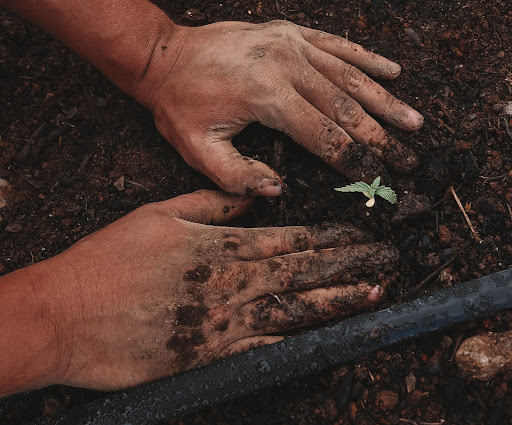
Let’s dig into how you can effectively prep your lawn to ensure a successful germination and growing season.
How to prep:
When preparing your seedbeds, it’s important to remove any weeds and rake through the bed exposing any weeds beneath the surface. Break down lumps of soil and rake the surface level. Be sure to remove any rocks and debris from the area as this could affect your plant’s growth.
Now it is time to nourish your soil. You can do this by applying a pre-planting fertilizer that will load your soil with nutrients needed for your seedlings to survive. Consider covering your seed bed with landscape fabric or plastic sheet for around 10 days, or when the soil becomes warm. By drying out the soil from winter frost and moisture, you will help “wake up” your soil and the microbes that live within it.
Factors affecting successful plant germination:
Don’t get ahead of yourself. Be sure that all signs of frost are gone and the soil temperature has risen to an average of 50-55ºF for cool season grasses or 65ºF for warm season grasses. We know how tricky Mother Nature can be, warming and cooling temperatures all within a couple of days. Therefore, it is best to stay on the safe side and wait until the weather has warmed up for good before heading out to plant.
Take into account each lawn seed’s desired depth and needed sunlight when planting to ensure it will thrive. Even in cooler temperatures, you may find your soil dry. Be sure to keep your soil moist, as this is the type of environment seeds need to successfully germinate in. If you are noticing a crusting on your seed bed, this is a sign that you are overwatering your seeds. You may need to carefully break up the surface which will give your seedlings a chance to break through the crust layer of soil that has become dried out. Also consider sunlight and temperature, which we cannot determine. However, by being patient and giving the lawn seed enough time to develop, your seedlings will have the opportunity to thrive this growing season.
